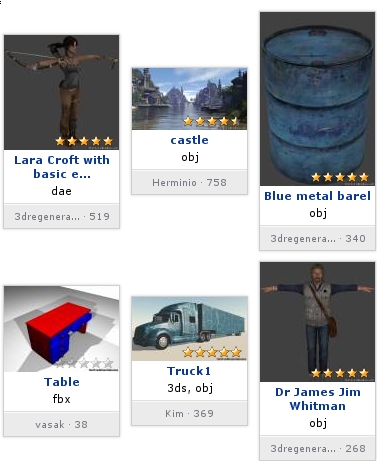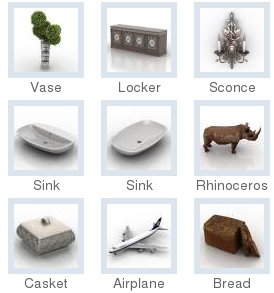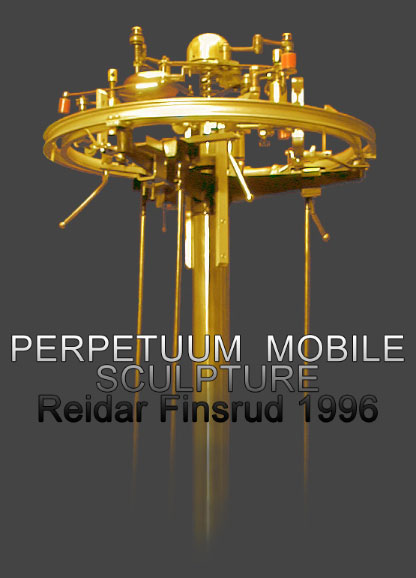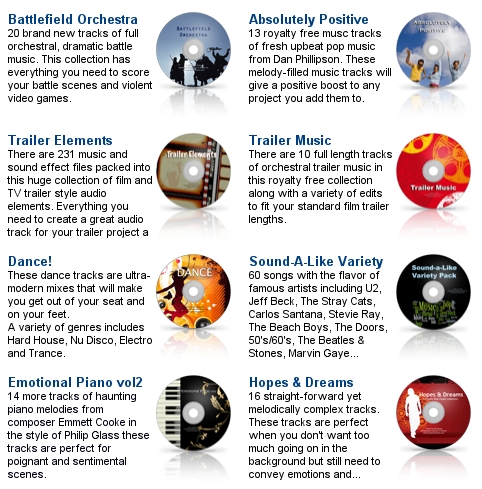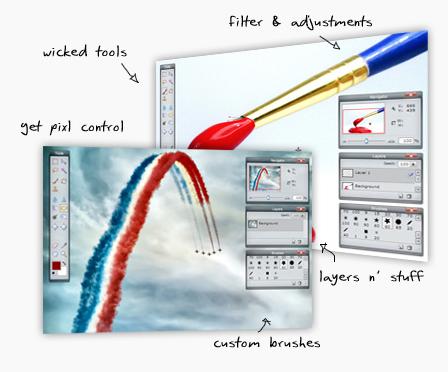
-
Free music archives
https://www.youtube.com/audiolibrary/music?nv=1
https://www.bensound.com/royalty-free-music/2
https://www.partnersinrhyme.com/pir/free_music_loops.shtml
http://www.partnersinrhyme.com/
http://www.archive.org/details/opensource_audio/
http://wiki.creativecommons.org/Content_Directories
http://hissandaroar.com/free-sounds/
-
-
FrontPage2024
3Dprinting (167) A.I. (523) animation (328) blender (179) colour (220) commercials (45) composition (144) cool (357) design (609) Featured (46) hardware (289) IOS (106) jokes (133) lighting (268) modeling (102) music (182) photogrammetry (150) photography (737) production (1217) python (77) quotes (475) reference (295) software (1272) trailers (287) ves (504) VR (218)
Thank you for visiting!! Please bear with us while we go through a redesign of the blog. New features and phone support on the way!
Björn Ottosson – How software gets color wrong
https://bottosson.github.io/posts/colorwrong/
Most software around us today are decent at accurately displaying colors. Processing of colors is another story unfortunately, and is often done badly.
To understand what the problem is, let’s start with an example of three ways of blending green and magenta:
- Perceptual blend – A smooth transition using a model designed to mimic human perception of color. The blending is done so that the perceived brightness and color varies smoothly and evenly.
- Linear blend – A model for blending color based on how light behaves physically. This type of blending can occur in many ways naturally, for example when colors are blended together by focus blur in a camera or when viewing a pattern of two colors at a distance.
- sRGB blend – This is how colors would normally be blended in computer software, using sRGB to represent the colors.
Let’s look at some more examples of blending of colors, to see how these problems surface more practically. The examples use strong colors since then the differences are more pronounced. This is using the same three ways of blending colors as the first example.
Instead of making it as easy as possible to work with color, most software make it unnecessarily hard, by doing image processing with representations not designed for it. Approximating the physical behavior of light with linear RGB models is one easy thing to do, but more work is needed to create image representations tailored for image processing and human perception.
Also see:
EVER (Exact Volumetric Ellipsoid Rendering) – Gaussian splatting alternative
https://radiancefields.com/how-ever-(exact-volumetric-ellipsoid-rendering)-does-this-work
https://half-potato.gitlab.io/posts/ever/
Unlike previous methods like Gaussian Splatting, EVER leverages ellipsoids instead of Gaussians and uses Ray Tracing instead of Rasterization. This shift eliminates artifacts like popping and blending inconsistencies, offering sharper and more accurate renderings.
The Rise and Fall of Adobe – The better, alternative software list to a criminal company
Best alternatives to Adobe:
https://github.com/KenneyNL/Adobe-Alternatives
- Affinity (Photo and illustration editing) https://affinity.serif.com/
- DaVinci Resolve (video editing): https://www.blackmagicdesign.com/au/products/davinciresolve/
- Clip Studio Paint (illustration): https://www.clipstudio.net/en/
- Toon Boom (animation): https://www.toonboom.com/
Microsoft is discontinuing its HoloLens headsets
https://www.theverge.com/2024/10/1/24259369/microsoft-hololens-2-discontinuation-support
Software support for the original HoloLens headset will end on December 10th.
Microsoft’s struggles with HoloLens have been apparent over the past two years.
Meta Horizon Hyperscape
𝐌𝐞𝐭𝐚 𝐇𝐲𝐩𝐞𝐫𝐬𝐜𝐚𝐩𝐞 𝐢𝐧 𝐚 𝐧𝐮𝐭𝐬𝐡𝐞𝐥𝐥
Hyperscape technology allows us to scan spaces with just a phone and create photorealistic replicas of the physical world with high fidelity. You can experience these digital replicas on the Quest 3 or on the just announced Quest 3S.https://www.youtube.com/clip/UgkxGlXM3v93kLg1D9qjJIKmvIYW-vHvdbd0
𝐇𝐢𝐠𝐡 𝐅𝐢𝐝𝐞𝐥𝐢𝐭𝐲 𝐄𝐧𝐚𝐛𝐥𝐞𝐬 𝐚 𝐍𝐞𝐰 𝐒𝐞𝐧𝐬𝐞 𝐨𝐟 𝐏𝐫𝐞𝐬𝐞𝐧𝐜𝐞
This level of photorealism will enable a new way to be together, where spaces look, sound, and feel like you are physically there.𝐒𝐢𝐦𝐩𝐥𝐞 𝐂𝐚𝐩𝐭𝐮𝐫𝐞 𝐩𝐫𝐨𝐜𝐞𝐬𝐬 𝐰𝐢𝐭𝐡 𝐲𝐨𝐮𝐫 𝐦𝐨𝐛𝐢𝐥𝐞 𝐩𝐡𝐨𝐧𝐞
Currently not available, but in the future, it will offer a new way to create worlds in Horizon and will be the easiest way to bring physical spaces to the digital world. Creators can capture physical environments on their mobile device and invite friends, fans, or customers to visit and engage in the digital replicas.𝐂𝐥𝐨𝐮𝐝-𝐛𝐚𝐬𝐞𝐝 𝐏𝐫𝐨𝐜𝐞𝐬𝐬𝐢𝐧𝐠 𝐚𝐧𝐝 𝐑𝐞𝐧𝐝𝐞𝐫𝐢𝐧𝐠
Using Gaussian Splatting, a 3D modeling technique that renders fine details with high accuracy and efficiency, we process the model input data in the cloud and render the created model through cloud rendering and streaming on Quest 3 and the just announced Quest 3S.𝐓𝐫𝐲 𝐢𝐭 𝐨𝐮𝐭 𝐲𝐨𝐮𝐫𝐬𝐞𝐥𝐟
If you are in the US and you have a Meta Quest 3 or 3S you can try it out here:https://www.meta.com/experiences/meta-horizon-hyperscape-demo/7972066712871980/
Popular Searches unreal | pipeline | virtual production | free | learn | photoshop | 360 | macro | google | nvidia | resolution | open source | hdri | real-time | photography basics | nuke
DISCLAIMER – Links and images on this website may be protected by the respective owners’ copyright. All data submitted by users through this site shall be treated as freely available to share.

Subscribe to PixelSham.com RSS for free
FEATURED LIGHTING POSTS
FEATURED COMPOSITION POSTS
-
Ross Pettit on The Agile Manager – How tech firms went from prioritizing cash flow instead of talent
For years, tech firms were fighting a war for talent. Now they are waging war on talent.
This shift has led to a weakening of the social contract between employees and employers, with culture and employee values being sidelined in favor of financial discipline and free cash flow.
The operating environment has changed from a high tolerance for failure (where cheap capital and willing spenders accepted slipped dates and feature lag) to a very low – if not zero – tolerance for failure (fiscal discipline is in vogue again).
While preventing and containing mistakes staves off shocks to the income statement, it doesn’t fundamentally reduce costs. Years of payroll bloat – aggressive hiring, aggressive comp packages to attract and retain people – make labor the biggest cost in tech.
…Of course, companies can reduce their labor force through natural attrition. Other labor policy changes – return to office mandates, contraction of fringe benefits, reduction of job promotions, suspension of bonuses and comp freezes – encourage more people to exit voluntarily. It’s cheaper to let somebody self-select out than it is to lay them off.
…Employees recruited in more recent years from outside the ranks of tech were given the expectation that we’ll teach you what you need to know, we want you to join because we value what you bring to the table. That is no longer applicable. Runway for individual growth is very short in zero-tolerance-for-failure operating conditions. Job preservation, at least in the short term for this cohort, comes from completing corporate training and acquiring professional certifications. Training through community or experience is not in the cards.
…The ability to perform competently in multiple roles, the extra-curriculars, the self-directed enrichment, the ex-company leadership – all these things make no matter. The calculus is what you got paid versus how you performed on objective criteria relative to your cohort. Nothing more.
…Here is where the change in the social contract is perhaps the most blatant. In the “destination employer” years, the employee invested in the community and its values, and the employer rewarded the loyalty of its employees through things like runway for growth (stretch roles and sponsored work innovation) and tolerance for error (valuing demonstrable learning over perfection in execution). No longer.
…http://www.rosspettit.com/2024/08/for-years-tech-was-fighting-war-for.html
-
2DGS – 2D Gaussian Splatting for Geometrically Accurate Radiance Fields
A 2D Gaussian Splats technique for extracting cleaner 3D geometry from 3DGS
https://github.com/hbb1/2d-gaussian-splatting
https://surfsplatting.github.io/
https://colab.research.google.com/drive/1qoclD7HJ3-o0O1R8cvV3PxLhoDCMsH8W
3D Gaussian Splatting (3DGS) has recently revolutionized radiance field reconstruction, achieving high quality novel view synthesis and fast rendering speed without baking. However, 3DGS fails to accurately represent surfaces due to the multi-view inconsistent nature of 3D Gaussians. We present 2D Gaussian Splatting (2DGS), a novel approach to model and reconstruct geometrically accurate radiance fields from multi-view images. Our key idea is to collapse the 3D volume into a set of 2D oriented planar Gaussian disks. Unlike 3D Gaussians, 2D Gaussians provide view-consistent geometry while modeling surfaces intrinsically. To accurately recover thin surfaces and achieve stable optimization, we introduce a perspective-accurate 2D splatting process utilizing ray-splat intersection and rasterization. Additionally, we incorporate depth distortion and normal consistency terms to further enhance the quality of the reconstructions. We demonstrate that our differentiable renderer allows for noise-free and detailed geometry reconstruction while maintaining competitive appearance quality, fast training speed, and real-time rendering.
-
Convert 2D Images to 3D Models
- HyperHuman Rodin – free and pay per use
- LumaLabs Genie – free, web based
- Vectary – free and monthly fees, web based
- Selva3D – pay per use
- 3D-Tool – one off payment
- Insight3d – free and open-source
- ItsLitho – free, web based
- Blender – free
- SculptGL – free, web based
- Embossify – pay per use, web based
- Smoothie-3D – free, web based
- ZW3D – one off payment
- ImageToSTL – free, web based
- Alpha3D – First 50 AI-generated 3D assets free
- Reliefmod – free, web based
- 3D Builder – free
- Cube by CSM.ai – web based
- Kaedim3D – monthly and pay per use fees
- 3DForPrint – free, web based
- ZoeDepth – free, web based
- ZoeDepth Colab notebook – easy to use interface for the depth estimation model “ZoeDepth”
- TilingZoeDepth – higher resolution free web based
- DreamGaussian – free, web based
- Photoshop Neural Filters – monthly fees
- DepthR – pay per use
- Materialize – open source
- VistaSculpt – monthly fees
- STL2PNG Converter – free
- Hi3D – free
- Meshy.ai – Text to 3D – free and pay per use
https://www.rankred.com/convert-2d-images-to-3d/
-
Starboard Urges Autodesk to Hold CEO Accountable After Probe
https://finance.yahoo.com/news/starboard-urges-autodesk-hold-ceo-154230189.html
Accounting problems at Autodesk first came to light in April, when the company delayed its annual financial disclosures and said it was opening a review of processes related to free cash flow and operating margins. In May, the company announced it was replacing Debbie Clifford as chief financial officer.
Bloomberg reported last week that documents showed the software company ignored internal warnings about the use of a controversial sales strategy that was central to the accounting probe’s findings.
Categories
- 3Dprinting (167)
- A.I. (523)
- animation (328)
- blender (179)
- colour (220)
- commercials (45)
- composition (144)
- cool (357)
- design (609)
- Featured (46)
- hardware (289)
- IOS (106)
- jokes (133)
- lighting (268)
- modeling (102)
- music (182)
- photogrammetry (150)
- photography (737)
- production (1,217)
- python (77)
- quotes (475)
- reference (295)
- software (1,272)
- trailers (287)
- ves (504)
- VR (218)
Recent Posts
- Matthieu Cotteret – Photographs on glass
- Fabian Oefner – Turning ordinary objects into books
- Ben McEwan – Deconstructing Despill Algorithms
- Creative duo Joseph Lattimer and Caitlin Derer Creates Absolutely Amazing The Beatles Collectable Toys
- SAMURAI – Adapting Segment Anything Model for Zero-Shot Visual Tracking with Motion-Aware Memory



